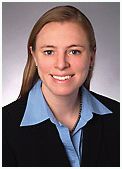The Patent Law Treaties Implementation Act of 2012 (PLTIA) has amended the patent laws to fulfil the provisions of the Patent Law Treaty (PLT), which “harmonizes and streamlines formal procedures pertaining to the filing and processing of patent applications.” The USPTO has revised the rules of practice to implement the provisions of the PLTIA as outlined in the Final Rule provided in Federal Register Vol. 78 No. 203 dated October 21, 2013.
Below is a summary of some of the changes:
Filing Date Requirements:
- U.S. applications filed on or after December 18, 2013 need not have claims to receive a filing date.
- Section 37 CFR 1.53(b) provides that the filing date of a non-provisional application for a patent under 37 CFR 1.53 (other than for a design patent) is the date on which a specification with or without claims is received in the Office.
- Section 37 CFR 1.53(c) provides that the filing date of a provisional application is the date on which a specification with or without claims is received in the Office.
- A design application still must contain a claim to be entitled to a filing date. U.S. non-provisional applications filed on or after December 18, 2013 can be filed “by reference” to a previously filed application in lieu of a specification and drawings.
- Where an application is filed without at least one claim, or “by reference” to another previously filed application, it will be treated in a similar fashion to an application filed without filing, search or examination fees previously.
- Drawings, where necessary for the understanding of the subject matter, are no longer required at the time of filing. However, this comes with some risk as “drawings submitted after the filing date of the application may not be used (i) to overcome any insufficiency of the specification due to lack of an enabling disclosure or otherwise inadequate disclosure therein, or (ii) to supplement the original disclosure thereof for the purpose of interpretation of the scope of any claim.”
- For U.S. applications filed on or after December 18, 2013, if a missing part of the specification or drawings is present in a priority document to which priority is correctly claimed at the time of initial filing, and the applicant timely files a copy of the priority document, the filing date of the application will be the date of initial filing.
- “[T]he ability to file an application without a claim or drawing should be viewed as a safeguard against the loss of a filing date due to a technicality and not as best practice.”
Applicants can expect to be provided with a filing date, and notified of a period of time within which to file a claim or claims, or a copy of the specification and drawings, and pay the surcharge ($140 for a large entity – 37 CFR 1.16(f)) to avoid abandonment, if the applicant has provided a correspondence address. If the applicant has not provided a correspondence address the applicant has three months in which to file claims and pay the surcharge to avoid abandonment. (37 CFR 1.53(f))
Time for Reply to Office Actions and Other Notices
- The time for responding to most office actions, such as restriction requirements or non-compliant amendment notices, has been increased to at least two months for all office actions mailed on or after December 18, 2013.
- The time for responding to an office action in a case under expedited examination has been increased to two months for all office actions mailed on or after December 18, 2013.
- Two month minimum period for response does not apply to U.S. Patent and Trademark Office pilot programs, such as the pre-appeal brief pilot program.
Revival of Abandoned Applications and Acceptance of Delayed Maintenance Fee Payments
- For applications filed before, on, or after December 18, 2013.
- Revival of abandoned applications and delayed maintenance fee payments must be on the basis of a showing of “unintentional” delay. Provisions of patent statutes related to “unavoidable” delay have been eliminated.
- Late payment of issue fee can be rectified (35 U.S.C. 27) via petition under the “unintentional standard” A grantable petition must include: the reply to the outstanding notice; petition fee ($1700 – 1.17(m)); any required terminal disclaimer and associated fee; statement that the delay was unintentional. (37 CFR 1.137)
- Late Maintenance Fees will also be accepted at any time by the “unintentional” standard.” The same $1700 petition fee applies here. (37 CFR 1.378)
Restoration of Priority Rights
- Applicants can file an application with a priority claim to an earlier-filed provisional or foreign application up to two months after the priority deadline (twelve months in utility cases or six months for design applications) if the delay was unintentional. However, the office notes that “the use of the additional two-month time period in 35 U.S.C. 119(a) as an ‘extension of time’ to file the subsequent application would be considered an abuse of the provisions.” (37 CFR 1.55)
- Petition must provide: priority claim in an application data sheet; petition fee ($1700 for large entity – 1.17(m)); statement that the delay was unintentional.
Issue Fees
- The Office will issue a Notice of Allowability requiring an oath or declaration or substitute statement, together with the Notice of Allowance and Fee(s) Due if the application is without oath or declaration but otherwise in condition for allowance. The applicant must file an oath or declaration or substitute statement no later than the date on which the issue fee is paid to avoid abandonment. The time period is not extendable. (37 CFR 1.53(f)(3) (ii))
- Applicant must pay fees indicated on Notice of Allowance, regardless of the issue and publication fees in effect on the date of payment, unless the USPTO indicates otherwise in the Notice of Allowance.
- A number of revisions are meant to change Supplemental Examination Proceedings to be treated in a like manner to Ex Parte Examination Proceedings.
Representation and Signatories
- Several rules have been revised to allow that an assignee, an applicant, owner, or other interested party may sign certain documentation, such as a fee transmittal letter, request for filing receipt, application transmittal, and a maintenance fee.
Revisions to Patent Term Adjustment
- Applies to patent applications filed on or after December 18, 2013.
- 37 CFR 1.704 has been amended to provide that the circumstances that constitute a failure of the applicant to engage in reasonable efforts to conclude processing or examination of an application also include the failure to provide an application in condition for examination within eight months from filing or commencement date.
- As adopted, 37 CFR 1.704(c)(12) provides that where there is a failure to provide an application in condition for examination eight months from filing or commencement date, the period of adjustment shall be reduced by the number of days, if any, beginning on the day after the date that is eight months from filing or commencement date and ending on the date the application is in condition for examination.
- 37 CFR 1.704(f) has been added, accordingly, to define when an application is “in condition for examination” for purposes of 37 CFR 1.704(c)(12). As adopted, an application is in condition for examination when the application includes a specification, including at least one claim and an abstract, and compliant drawings, any required English translation, any required sequence listing, the inventor’s oath or the application data sheet, all necessary fees, any certified copy.
It should be stressed that the new revisions “should not be viewed as prescribing a best practice for the preparation and filing of a patent application.” The preparation of claims and drawings for a provisional or non-provisional application is prudent for any claimed invention for which patent protection is desired.
Practice Tips
• File with claims and formal drawings, whenever possible.
• ALWAYS include fully completed ADS and Correspondence Address.
• ALWAYS include priority reference at time of filing.
• File certified copies timely.
• File signed Oath and Declaration as soon as possible but no later than payment of issue fee.
To view changes to the rules at the USPTO related to filing and prosecution of U.S. patent applications, click here.












